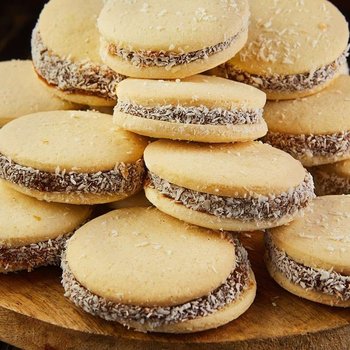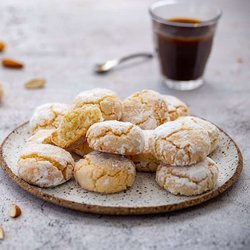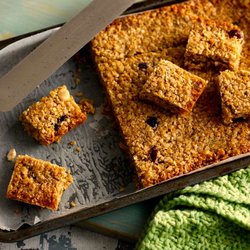
Argentine Alfajores Biscuits
Prep Time: 30 minutes
Cook Time: 6 minutes
Total Time: 36 minutes
Servings: 20 pieces
These delicious biscuits are a staple of Argentina - almost a cross between cake and biscuit.
An Argentine alfajor is a pair of soft, crumbly biscuits sandwiching a layer of dulce de leche (a thick, super-sweet caramel-like confection) and covered with chocolate or dusted with sugar or desiccated coconut.
Don't worry if you can't get dulche de leche, you can make it at home with sweetened condensed milk.
Allow extra time for this and for resting the dough.
Ingredients
- 110g unsalted butter
- 80g icing sugar
- Zest of half an orange
- 40g eggs
- 1tbs honey
- 200g self-raising flour
- 5g cocoa powder
- 500g dulce de leche
- 600g 70% dark chocolate
Method
If you can't get dulche de leche, you can make it at home with sweetened condensed milk: Pour condensed milk into a heatproof bowl or jar and place in a pot with water halfway up the sides of the container. Cover loosely and simmer for 2–3 hours, topping up water as needed. Stir occasionally for even caramelisation.
Using a food processor or mixer, blend the butter, orange zest and icing sugar. Then add the egg and honey and continue mixing until pale and creamy. Finally, add the flour and cocoa powder and mix together without overworking the dough. Cover the dough in clingfilm or parchment paper and chill in the fridge for at least two hours.
Roll out the dough to 2mm thick and cut out rounds with a 6cm cutter. Place the biscuits on a tray lined with baking paper, leaving a bit of space between each one, and bake for six minutes at 190C.
Once the biscuits are cool, fill a piping bag with dulce de leche and use it to cover one side of the first biscuit. Turn a second biscuit upside down (to ensure the outer sides of the alfajores are both as flat as possible), place it on top of the first one and press down gently. Repeat with the rest of the biscuits. For the best results, leave for 24 hours, but if you can’t wait, it’s fine to go straight to the coating.
Temper the chocolate and then submerge the alfajores one at a time. Make sure each one is fully coated with chocolate, using a palate knife to remove excess from the top and smoothing the base on the rim of the bowl, and then place carefully on a tray lined with greaseproof paper or cellophane. Once the chocolate dries, the alfajores are ready to eat.




